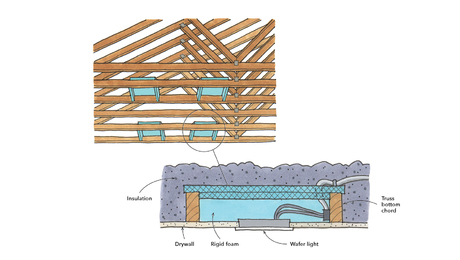Getting insulation into hard-to-reach areas like along the eave line (especially on low-pitch roofs) and into ceiling joist bays covered by plywood can be a real challenge with the blower’s flex hose. I’ve found that attaching a length of 2-in. PVC pipe or the wand from a shop vacuum gives me more control to direct the insulation precisely where it’s needed.
In attics where I have room to swing it, I slide the blower hose a foot or so onto a 10-ft. piece of pipe. The long pipe can also help to level the insulation. When the hard-to-reach areas are closer at hand, I use a shopvacuum wand. I slide the hose over the end and wrap it once or twice with duct tape, folding over the end of the tape so that I can quickly pull off the tape if I need to remove the wand. With this setup, I can feed the hose into plywood-covered joist bays. As the bay fills up, I slowly pull the hose back out.
John Taitt, Sierra Vista, AZ
Fine Homebuilding Recommended Products
Fine Homebuilding receives a commission for items purchased through links on this site, including Amazon Associates and other affiliate advertising programs.

Loctite Foamboard Adhesive

Disposable Suit

Caulking Gun






























View Comments
Or...Duct tape a long broomstick or equivalent to the end of the hose, and by holding the closest end of the broomstick, you can direct the hose (far end and attached hose) into hard to reach cavities and eves. I speak from experience.
I take it one step further and hook a short stick loosely (hook & eye) to the end of the broomstick, with a distinct mark at the thickness of insulation I'm looking for- the stick dangles down and acts like a dipstick. Many professional insulators achieve the same effect by stapling paper rulers vertically throughout the attic.